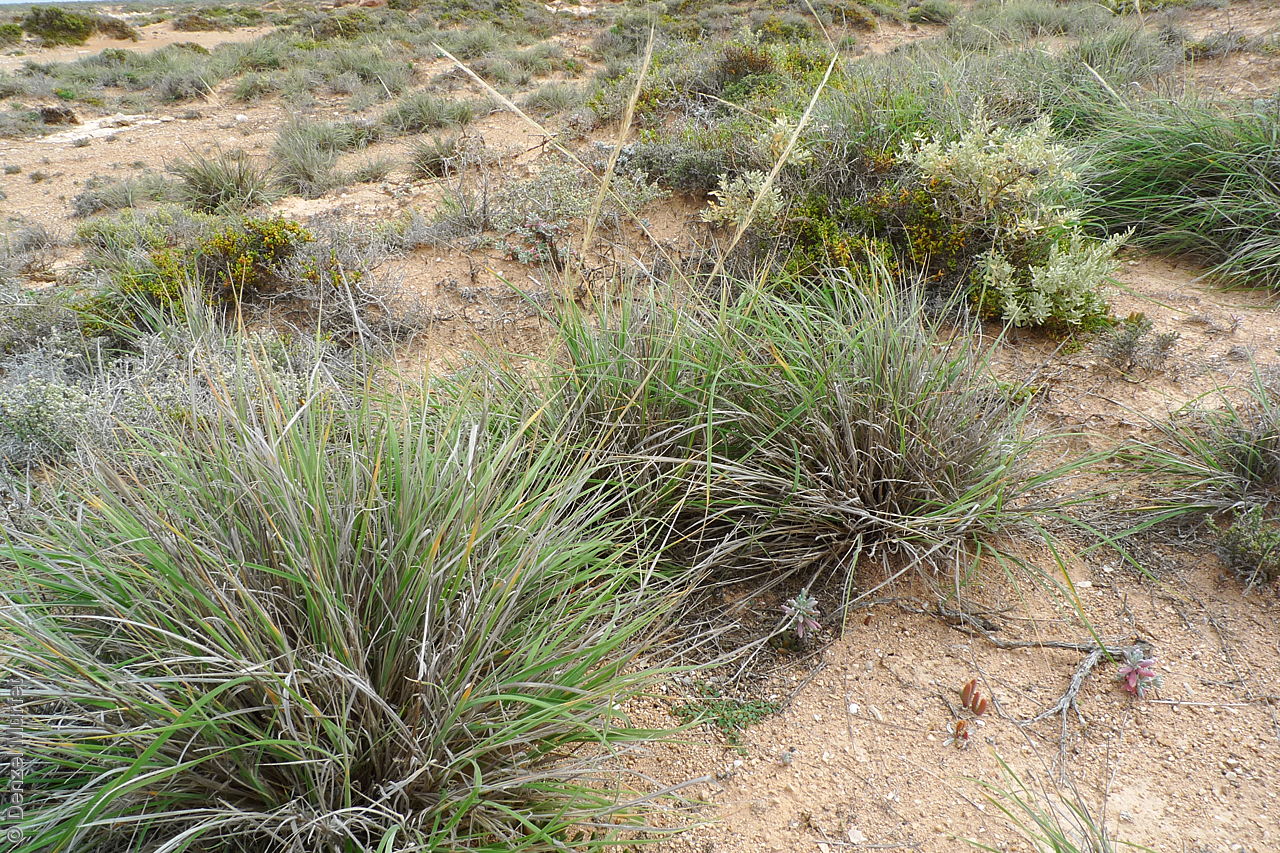
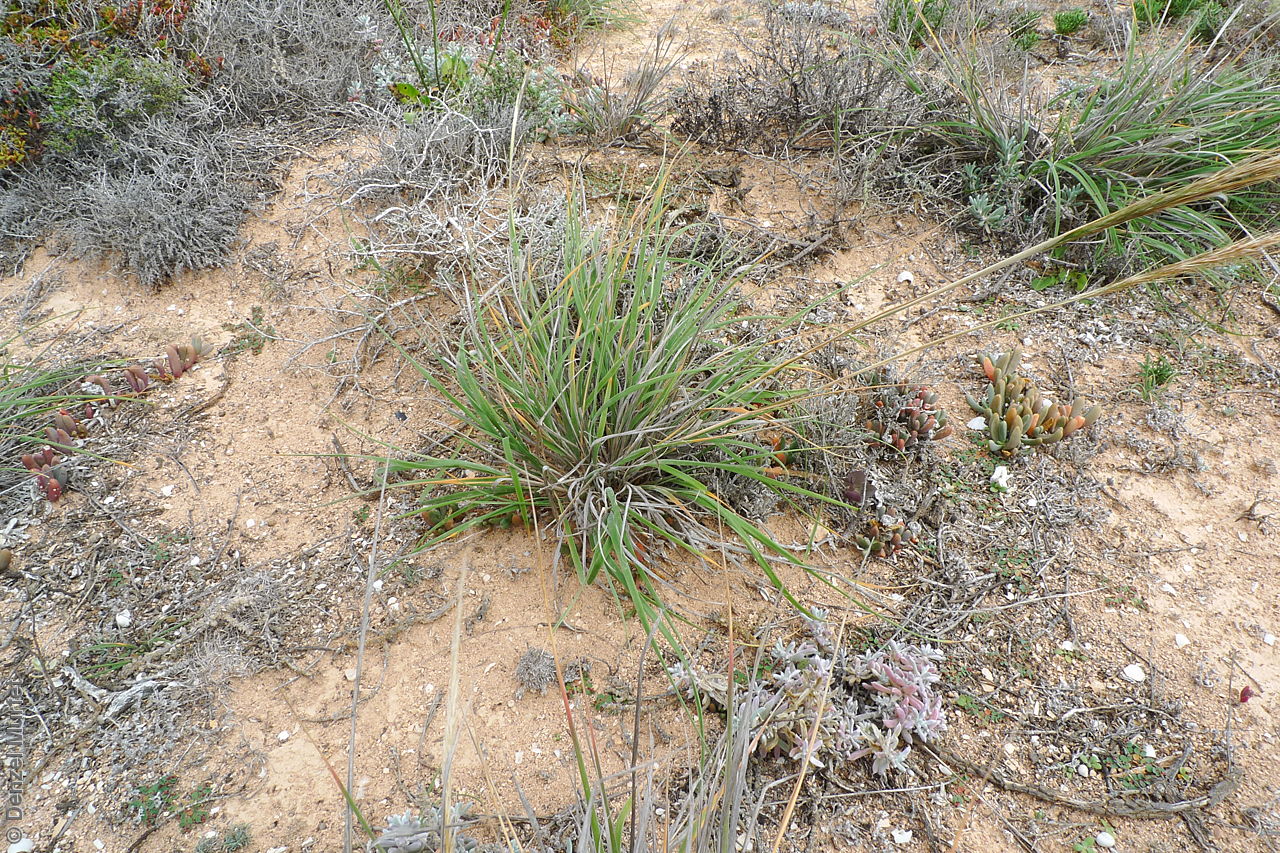
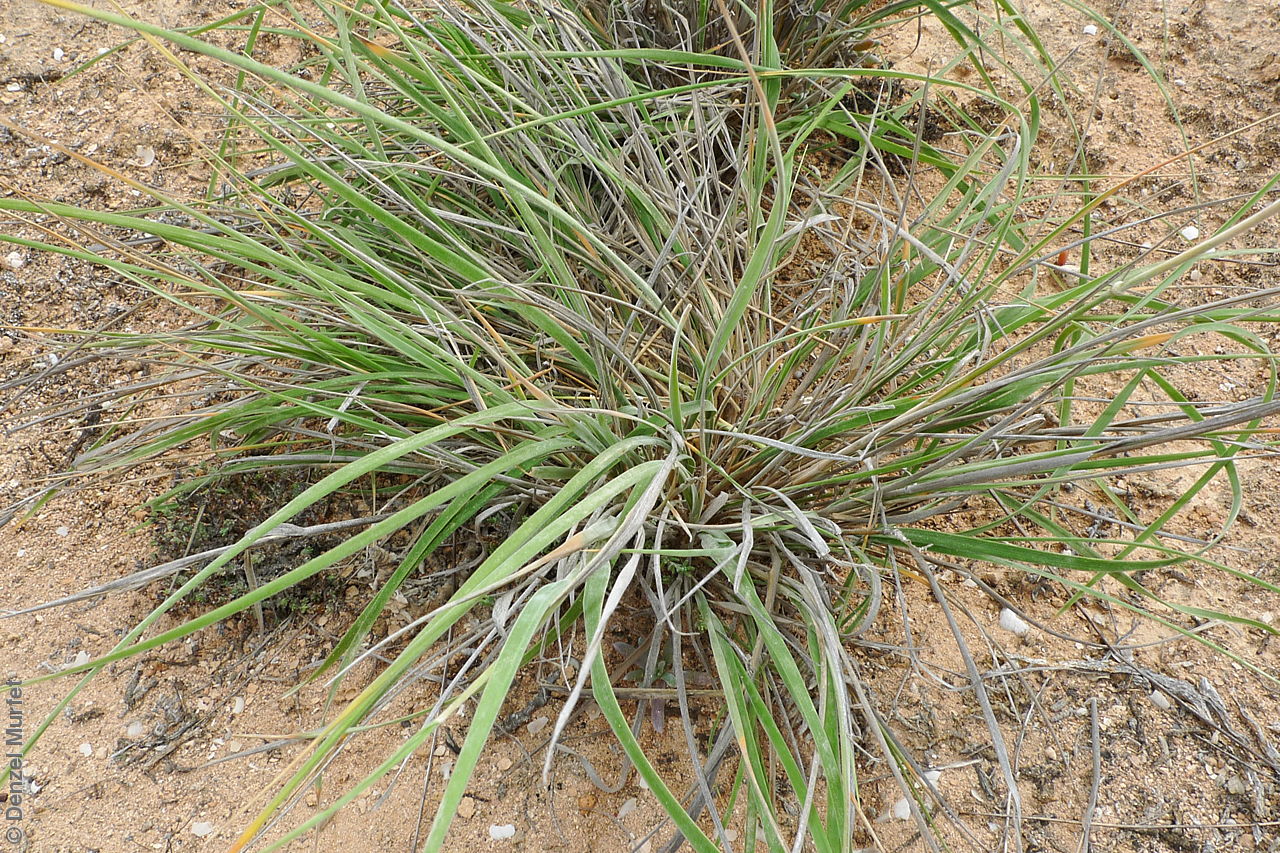
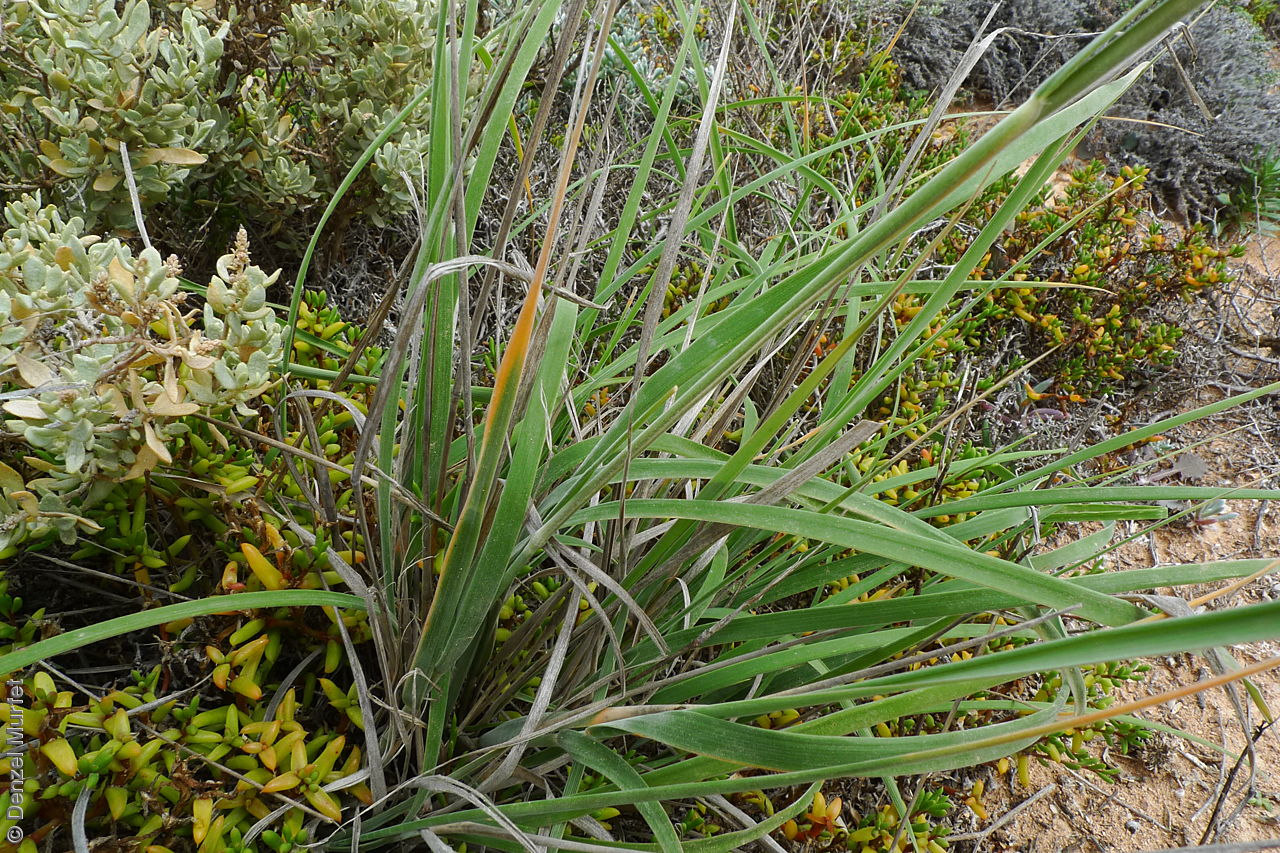
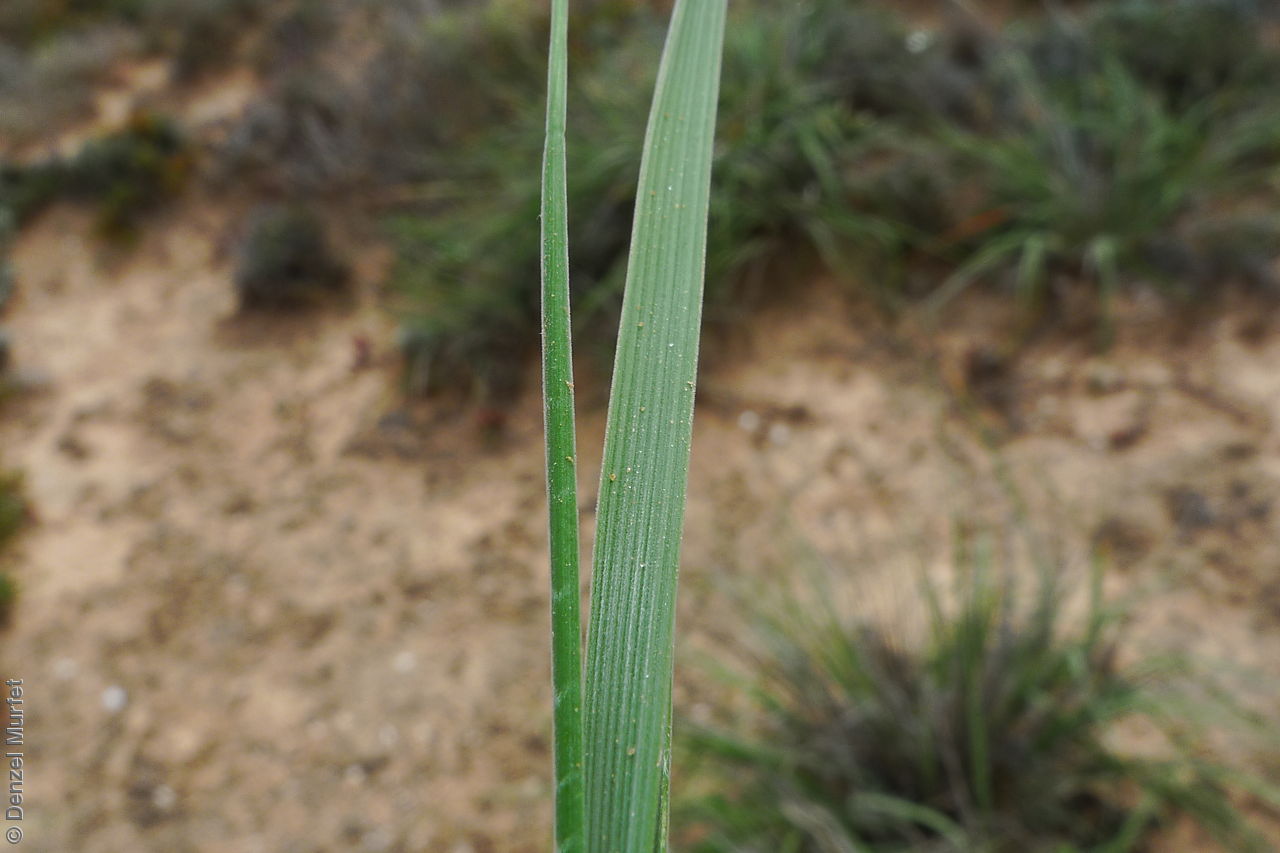
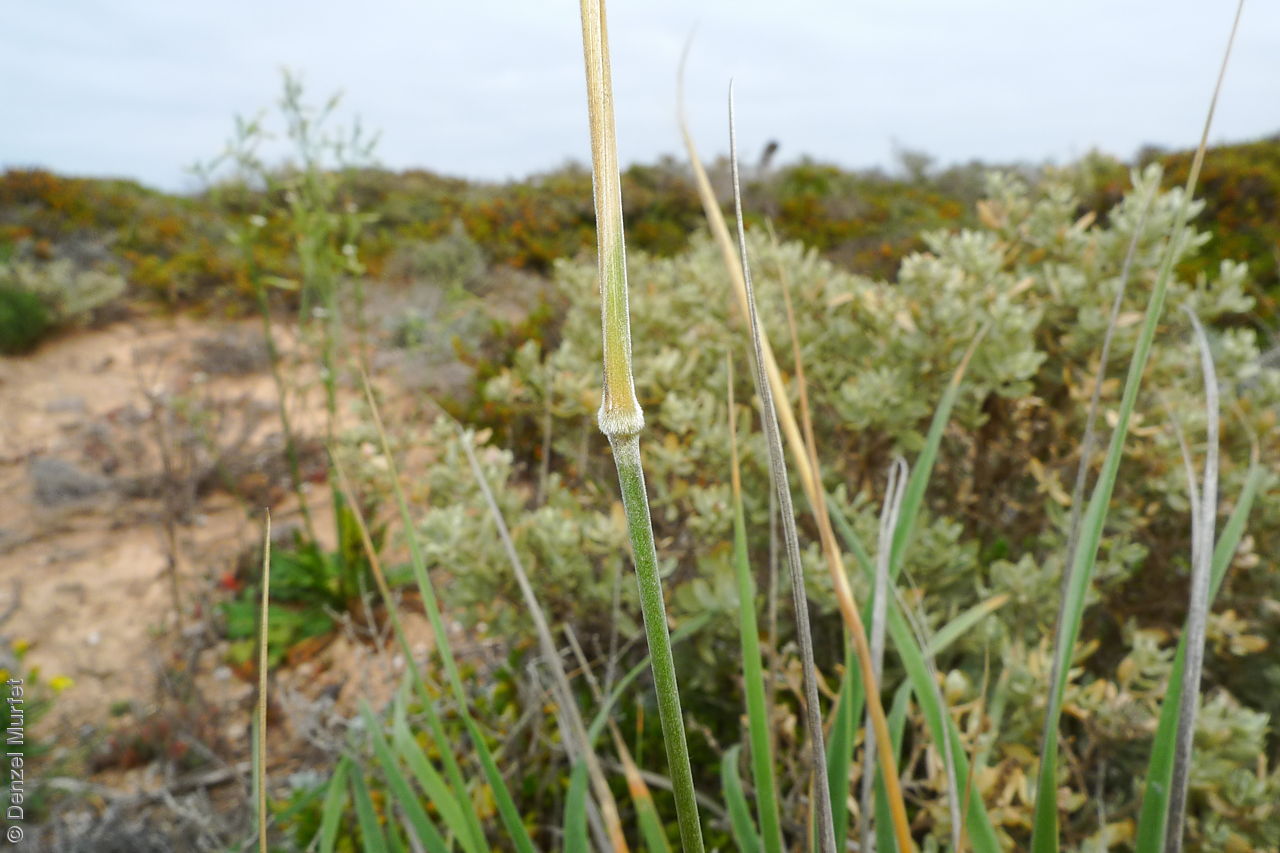
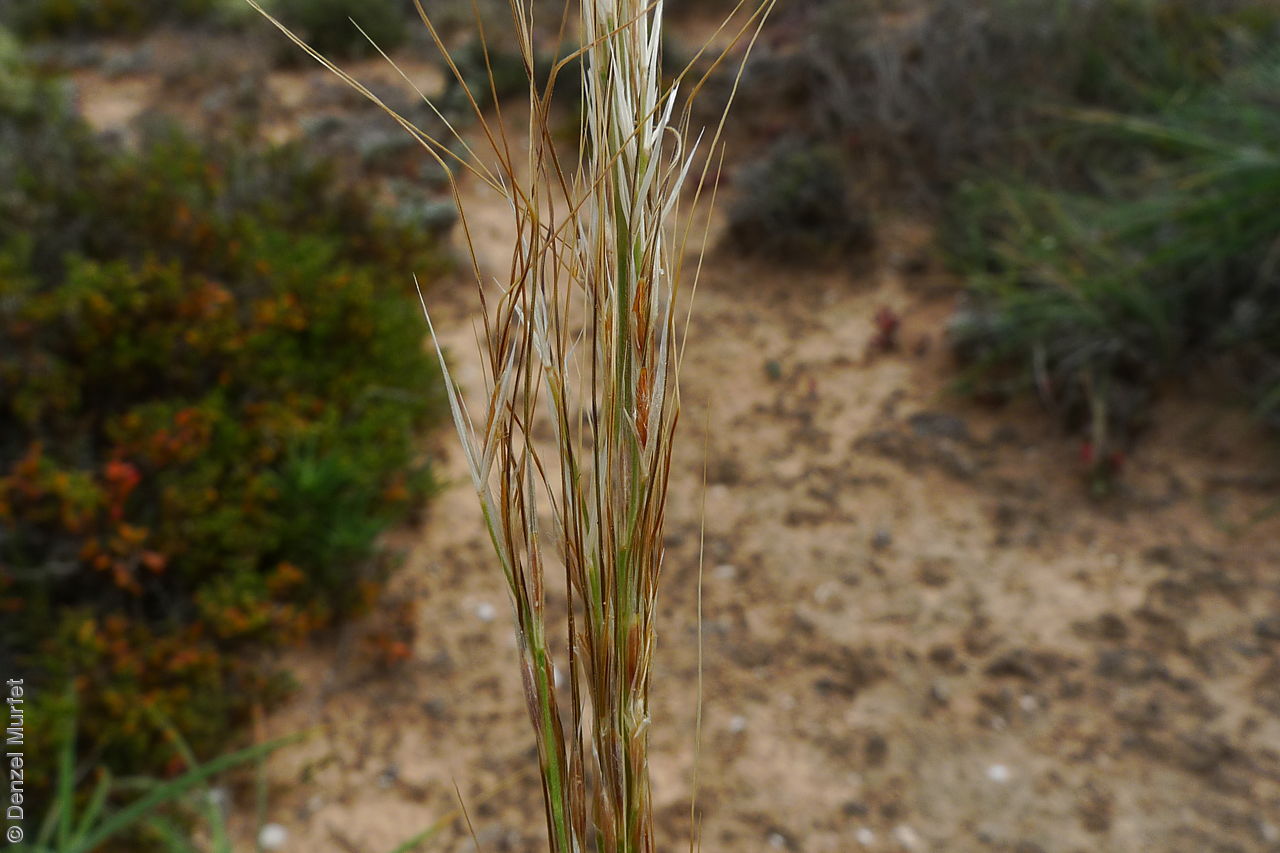
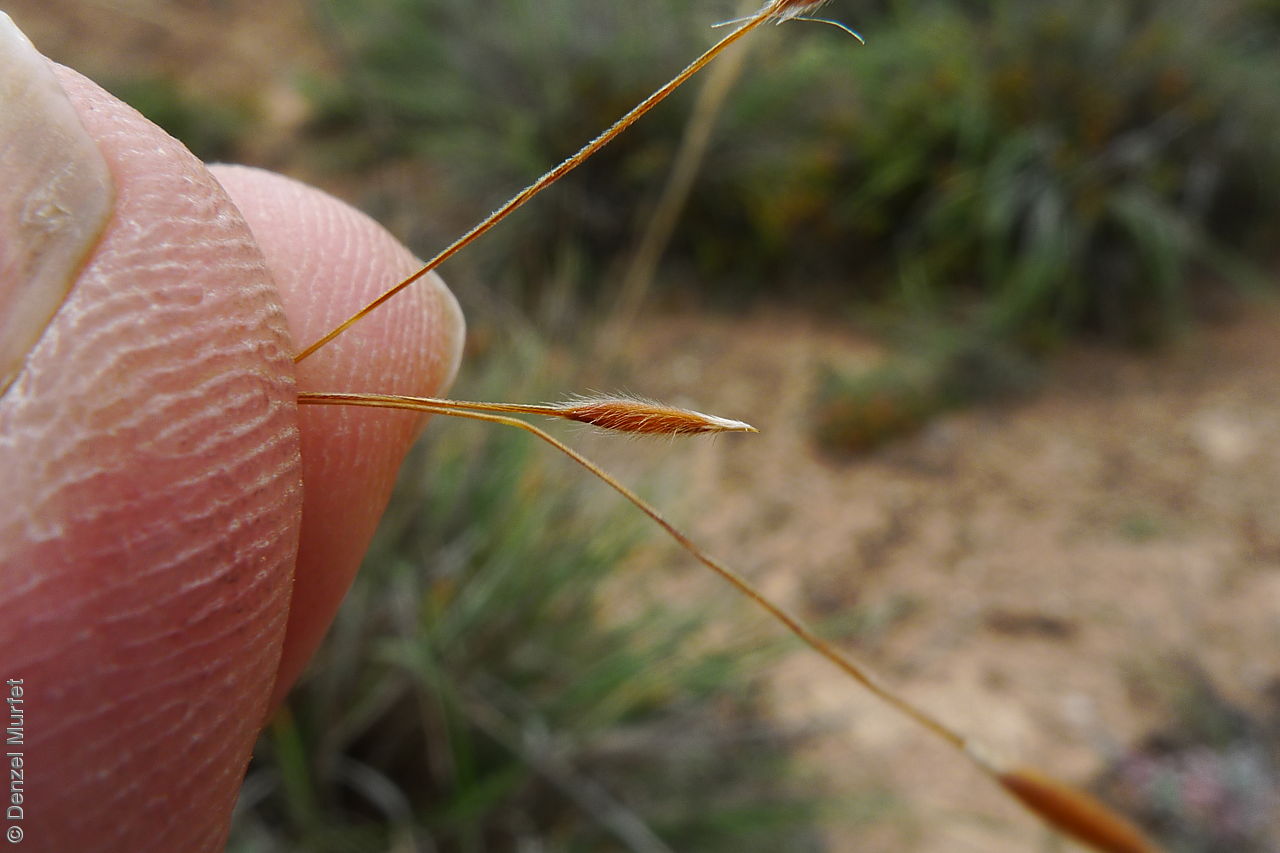
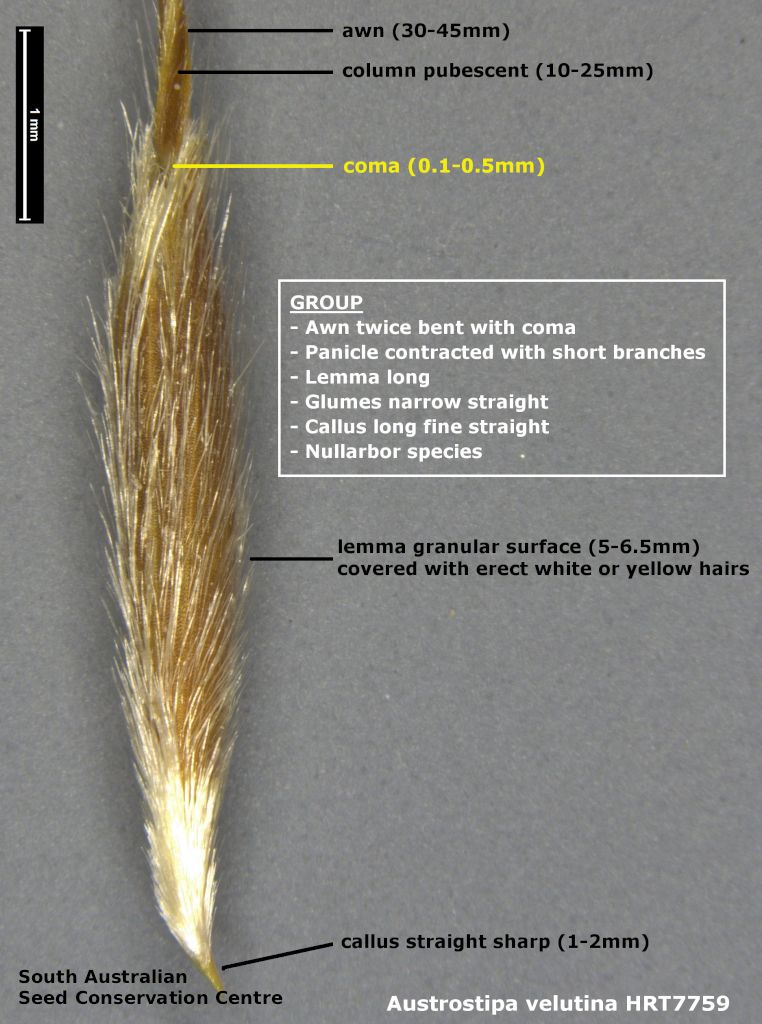

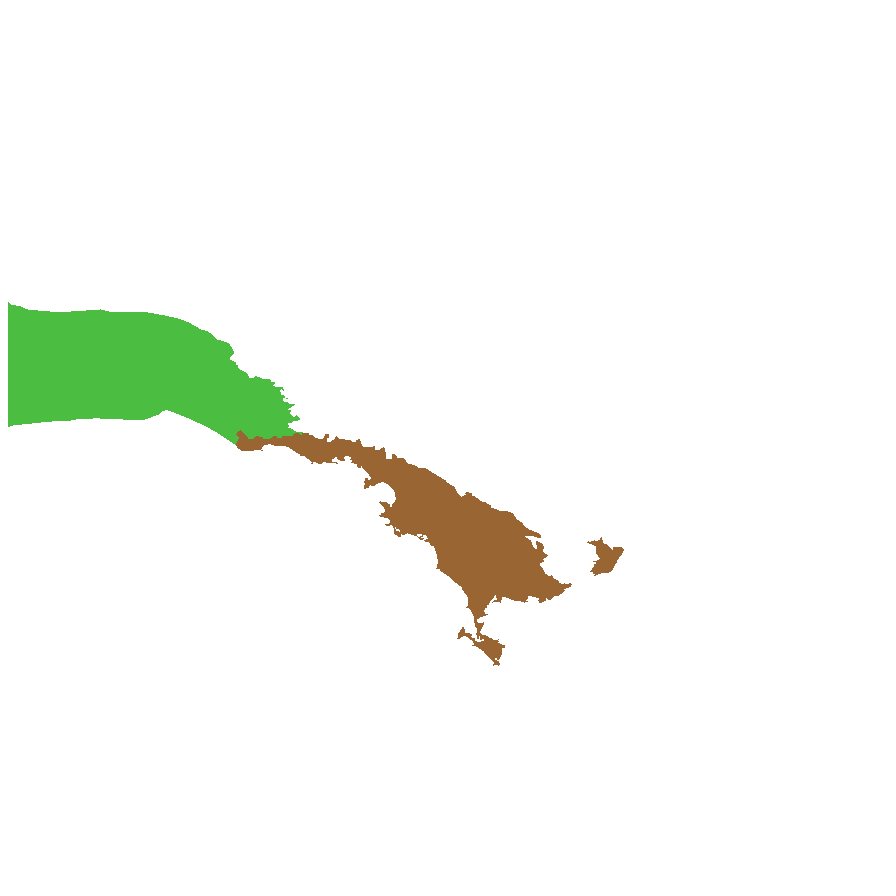
Prior names
Stipa velutina
Etymology
Austrostipa from the Latin 'auster' meaning south and the genus Stipa, referring to the genus being allied to Stipa but restricted to Australia. Velutina from the Latin 'velutum' or 'velvetum' meaning velvet and the diminutive '–inus' meaning like, referring to its leaves and stem having a velvety surface.
Distribution and status
Found on the western side of the Eyre Peninsula and along the Nullarbor in South Australia, growing on limestone clifftops and dunes and offshore islands in shrubland. Also found in Western Australia. Native. Rare in South Australia. Rare in Western Australia.
Herbarium regions: Nullarbor, Eyre Peninsula
NRM regions: Alinytjara Wilurara, Eyre Peninsula
AVH map: SA distribution map (external link)
Plant description
Tufted perennial grass to 80 cm high, with erect unbranched, velvety culms and velvety-hairy nodes. Leaves bluish, dense velvety-hairy on both sides with blades loosely rolled or flat to 40 cm long and 5 mm wide; leaf sheaths velvety-hairy. Inflorscences dense contracted panicle to 20 cm long with scabrous glumes, lower longer than the upper. Flowering between September and November.
Key to this species: awn twice bent with coma; panicle contracted with short open branches; glumes narrow straight; callus long fine straight; leaves bluish with densely velvety hairs; Nullarbor species Fruits are brown linear-elliptic lemma to 6.5 mm long with slightly granular surface texture and covered in white or yellow hairs; coma to 0.5 mm; callus straight to 4 mm long; awn twice bent to 45 mm long and column pubescent to 25 mm. Seeds are yellow-brown narrow-ovoid grain to 3 mm long within the lemma. Seed embryo type is lateral.
Seed collection and propagation
Collect seeds between November and January. Use your hands to gently strip the seeds (lemma) off the mature fruiting spike, those that are turning yellow colour. Mature seeds will come off easily compare to the immature seeds that remain on the spike. Alternatively, you can break off the whole fruit spike to allow some of the seeds to mature further. Place the seeds/spike in a tray and leave to dry for two weeks. No further cleaning is required if only seed collected. If seed spikes collected, use hand to strip off the mature seeds. Store the seeds with a desiccant such as dried silica beads or dry rice, in an air tight container in a cool and dry place. Viability of grass seeds could be very variable, depending on time of seed collections and seasonal conditions.